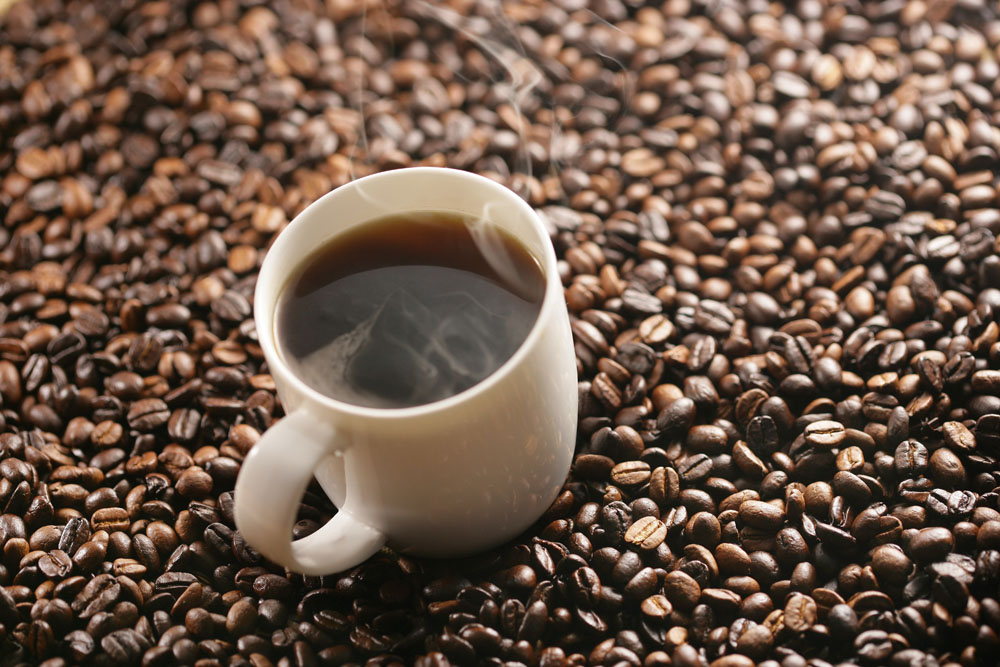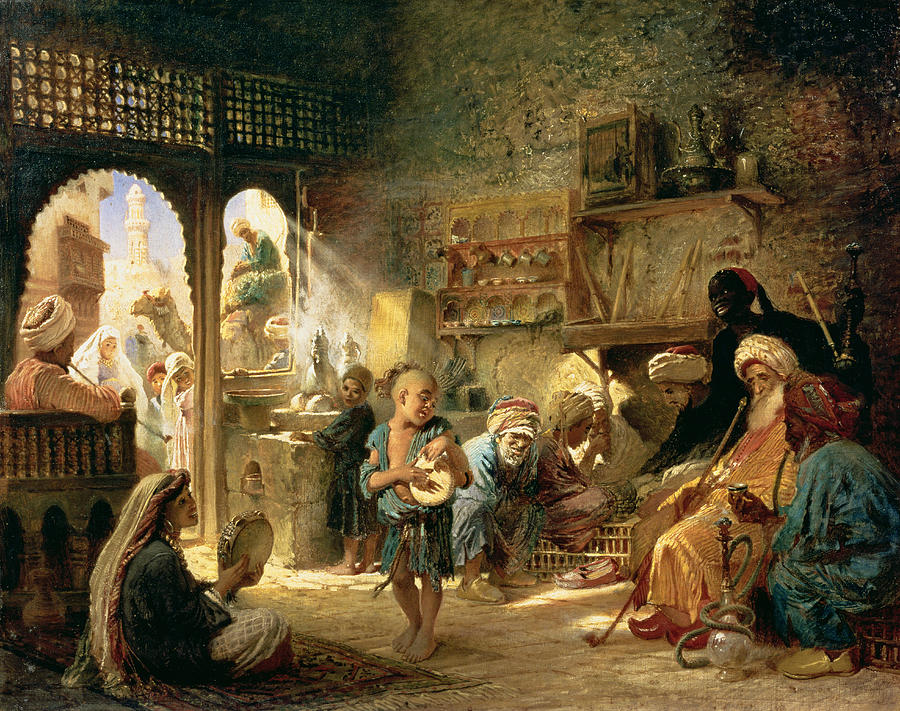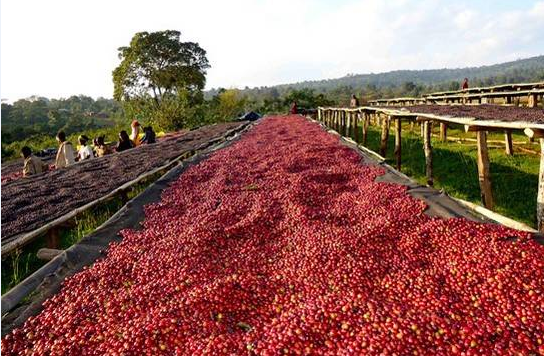Nordic baking is a very light baking style
About "double baking", "thin fire baking", "big fire baking" and "Nordic baking"
Among these many baking methods, we specially pick out "double baking", "small fire baking" and "fire baking" to introduce to you.
Let's start with "double baking". Some people also call it "secondary baking". According to the literal meaning, we can explain very clearly that when we bake beans for the first time, we use low heat to bake beans until the moisture begins to decrease and the color of beans becomes lighter. Stop baking immediately (it should be emphasized here that the time to stop is not random, but must be carefully judged and stopped at the most appropriate time). It must be completely cooled (usually for up to a day) to confirm that the "bean heart" has cooled completely before continuing with the second baking.
However, you may ask, why do "double baking (secondary baking)"? This can be divided into appearance and taste of beans to show that through "double baking (secondary baking)", the moisture of beans can be removed first to avoid uneven baking. in addition, in this way, the appearance of beans will be more consistent and consistent, if for the seller of baked beans, it can make the baked beans more beautiful. But I think what is more important is that through "double baking (secondary baking)", astringent taste can be removed, excessive aroma and flavor in some beans with different characteristics can be suppressed, and taste balance and stability can be achieved.
Of course, most of us carry out "double baking (secondary baking)" because of the latter, but we also know that during the roasting process of raw coffee beans, with the increase of baking time, the aromatic substances are also produced and then gradually disappear, so how to take into account the above characteristics, to achieve a balance point is even more a knowledge.
According to our own tests, under all the same conditions, the taste of the coffee liquid extracted from "double roasting (secondary baking)" beans is obviously relatively calm and balanced, and there will be no "too much" unnecessary aroma and too prominent flavor, which is for drinkers who like the taste of meekness and uniformity. There is no doubt that "double baking (secondary baking)" is the best way of baking. On the contrary, the coffee liquid extracted from non-"double roasting (secondary baking) beans is more lively and full of vitality, and is rich in changes in bitterness and sweetness at the same time.
So, can we say which baking method is the best? no way! It can only be said that it depends on what kind of expression you like, and choose the baking method that "best suits" you.
In addition, "small fire baking" is also known as "long-time baking", and the vernacular point is "slow fire pie." this baking method is handled properly and can be skillfully adjusted to increase bitterness. for some drinkers who like bitter taste, it is also possible to boldly choose beans that are "suitable" for shallow baking in this way, which is really a great blessing! However, it should be specially emphasized that this does not mean that beans baked in the way of "thin fire baking" will not be sour, but "increase bitterness"!
Now that we mention "small fire baking", let's also say "fire baking", that is, "fast fire pie" to shorten the baking time. This baking method is operated properly, and it can also skillfully adjust the sour taste, remove unnecessary residual sour taste, and leave a wonderful and lively sour taste, but because the baking temperature is higher, it will be easier to bake unevenly or have excessive smoke smell. However, these two situations can still be solved through the adjustment of baking skills.
Of course, you may see a different view from ours in some bibliographies, for which we speculate that the difference between "roaster" and "baking method" is the main reason. However, the instructions of all the above words are written after the actual test in our factory, not just a theoretical consideration, so don't explain it to you here.
With regard to Nordic baking, it looks like power roasting, that is, "fire roasting" goes straight to the point, and there will be a few insistence on me, a roaster growing up in the so-called "third wave" of coffee. It's like refusing deep baking, hating beans associated with the second explosion, the shallower the better, and so on. But the problem of shallow baking is not only that the baking degree is set in an explosion (usually the time to drop beans can not be separated from the dense explosion or after), there are many other factors that are quite noteworthy, such as firepower change, total baking time, temperature and humidity, throttle control and so on. Although the sour and sweet shock of shallow baking (or very shallow baking), the beauty of sour and the charm of sweetness is a baking goal that attracts us, but it often brings uncomfortable acid at the same time, which usually comes from the fact that the above changes are not mastered well. as a result, the built-in acid degradation and development of chlorogenic acid, citric acid, malic acid and so on are incomplete, or the poor mastery of caramelization reaction and the incomplete Mena reaction lead to the feeling of sweet powder. These marginal baking methods are easy to screw up because of these troublesome chemical changes. As a result, long-term bean cultivation and cooked achievements have become the only solution.
According to the excerpt from the new version of coffee science, although Nordic roasting is a very shallow baking style, it is "shallow roasting without hurry or slow". The control of firepower is simply a big fire until before the explosion, reduce or turn off the fire to glide, so that the important stage of the explosion is not urgent and complete caramelization, Mena reaction, and the fire before the explosion with the fully open throttle, let the hot air play its due effect. As a result, even if the beans are dense or even before an explosion, the acid has its complete degradation time.
And the control of the total baking time, although the fire to the end, but the key point lies in the sharp reduction of the lower bean temperature, such as the original 180-200 degrees, the lower bean temperature is reduced to 150-160 degrees, this adjustment will make the total baking time a little longer. it is possible that the original 7-8 minutes to a burst point into 9-10 minutes to meet the arrival of a burst. You don't have to pick the brakes all the time like the temperature of the beans is too high (in fact, I didn't control it properly).
Another key, I think, is the time to turn off the fire or set it to a very small fire. I'm afraid it depends on the lock temperature parameters of the baker. in any case, there should be enough thrust to let the temperature rise slightly and slowly reach the target of the first explosion.
After practicing these key ideas, the cup test of the original baking method and the Nordic baking method, I don't know if it has a psychological effect, but there are some but key taste differences.

Important Notice :
前街咖啡 FrontStreet Coffee has moved to new addredd:
FrontStreet Coffee Address: 315,Donghua East Road,GuangZhou
Tel:020 38364473
- Prev

What are the legends about the origin of coffee? Telling stories from legend to history
The story of coffee in the coffee workshop (Wechat official account cafe_style) dates back several generations, spans more than 1000 years, and, like so many events on Earth, is still wrapped in fog. The story of coffee is the journey of a brown seed, full of mystery and wonder. Every time we drink coffee, it's like
- Next

The history of coffee, what is coffee cherry (Coffee Cherry)? What red cherry project?
The historical monks of red cherries and sheep coffee beans were first discovered and eaten by locals on the African continent. From 575 BC to 850 BC, coffee spread from Ethiopia to the Arab region, and there are many speculations about the spread process, one is that the indigenous Africans brought coffee beans to Arabia during the migration, and the other is that the Sufi, a religious giant and famous for its plunder,
Related
- How did the Salvadoran coffee industry develop in Central America?
- What exactly does the golden cup extraction of coffee mean?
- The Origin of Coffee flower
- [2023 Starbucks World Earth Day] there are more meaningful things besides free Starbucks coffee!
- What kind of coffee is there in Spain? 9 Flavors of Spanish Coffee
- Aromatic African coffee| Kenya's coffee culture and historical production area
- Liberica Coffee Bean knowledge: the characteristics of Liberian Coffee beans of the three original species of Coffee beans
- The origin and formula of Spanish latte introduces the taste characteristics of Bombon coffee in Valencia, Spain.
- How to adjust the solution of over-extracted coffee
- What is the tasting period of coffee beans? What is the period of coffee and beans? How should coffee wake up and raise beans?

